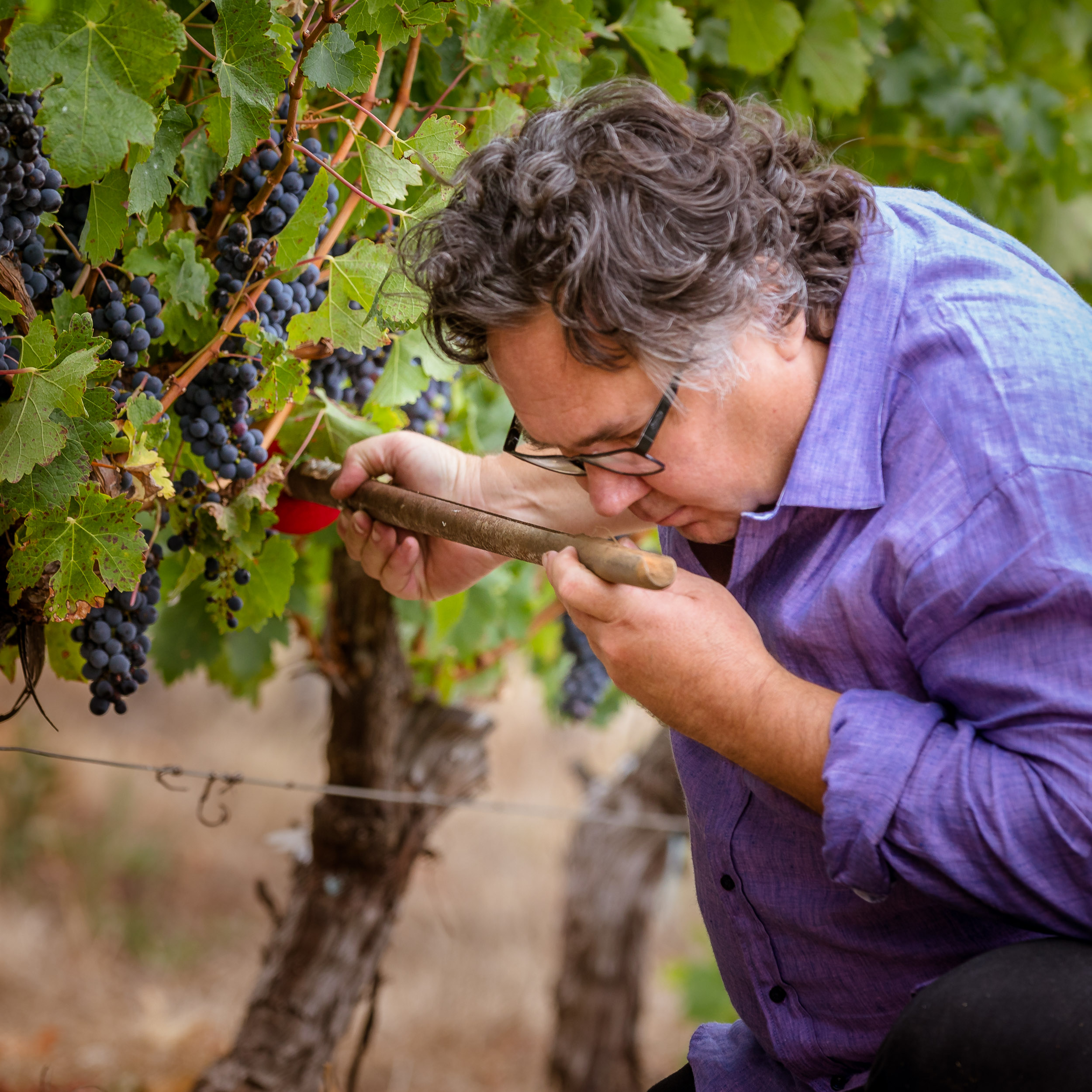 By Bruce Dukes, Margaret River Agronomist and Winemaker.
By Bruce Dukes, Margaret River Agronomist and Winemaker.The South West of Western Australia, which includes Margaret River, has been geologically stable for tens of millions of years. The result is geologically ancient soils which are mainly parented from decomposed granite. The highly weathered soils typically have a loamy sand and gravelly surface which transitions to clay dominant at around 1 metre. The loam contributes to the nutrient and moisture holding capacity of the soil, while the interspersed ironstone gravels and sands assist in soil drainage and aeration. The undulating topography allows for gentle slopes which favour both surface drainage of water and air.
The moderate depth and fertility of the soils allow for a sound balance between water holding and nutrient storage capacity for vine health and performance. An excess of nutrients, including water will encourage too much growth, while a deficiency will restrict performance. It is this moderate middle line or balance which is gives the best results in wine growing. Winter rains can be stored within the soil profile, and then gradually released to the vine as it requires it over the growing season. As we approach Christmas, the vine has generally achieved full shoot length, corresponding to the lower levels of moisture in the soil. Once the shoot growth has ceased, the vine then focuses on its evolutionary purpose of ripening the grapes.
Maritime Climate
Margaret River enjoys a maritime climate, characterised by cool, wet winters and warm, dry summers. Around 80% of the 1,000mm of annual rainfall occurs during the winter months while the vines are predominantly dormant, with 20% during the growing season. The infrequent and low amounts of summer rainfall correspond to low mildew pressures. The plentiful winter rains originate from the west and south west, over thousands upon thousands of kilometres of uninterrupted ocean and airflows, which deliver reliable and pure rainwater.
The Indian Ocean defines Margaret River to the north and west, while the Great Southern Ocean which marks the southern boundary, while the eastern boundary is defined by the “Gladstones Line” of longitude, 118oand 30 mins. This line runs from the town of Busselton in the north to 16 km east of Augusta in the south. These oceanic influences moderate the environment.
The Leeuwin Current
The Leeuwin Current further stabilises and softens the Margaret River areas climate. The sometimes-brisk Leeuwin Current begins in the warm tropical waters off the North West Cape of Western Australia. The current roughly follows the West Australian coastline down in a southerly direction, around Cape Naturaliste, along the west coast of Margaret River. It then curves around Cape Leeuwin and heads across the great Australian Bight towards Tasmania. Fisherman and sailors often seek this current as it can advantage travel speeds.
Northerly winds over summer months slow down the southerly flowing and pulsing Leeuwin current. As the northerly breezes slow over the winter months, the current strengthens, yielding warmth in winter and cooling in summer. The net effect is a softening of the Margaret River climate when compared to continents in similar latitudes which don’t have these specific current influences. The Leeuwin current is typically 2 to 3 km in width and only 20 cm deep and typically 35 km off the coastline around Margaret River. The current is typically a few ° C warmer than the surrounding ocean in Margaret River, explaining why Southern Bluefin tuna, Western Rock lobster, and Australian salmon are prolific in our waters. The Leeuwin current contributes to moderating temperature extremes, and enhancing the winter rainfall and reliability.
Biodiversity
The well drained and moderate fertility soils along with the gentle climate creates a very long and sympathetic growing season for grapevines. This provides a number of different grape varieties fantastic conditions to express their personalities. The gentle climate, along with the moderate soil temperatures in part explains why we have such diversity of microflora and fauna in the region. The moderate soil temperatures and soil moisture profiles, which of course are great for the vines, also allow for good germination of a diverse array of seed types, which corresponds to a large amount of biodiversity. Our local hardwood species, the Jarrah tree is a great reflection of our soils and climate. This tree is very slow growing, has very high-density wood and only grows to moderate heights.
Cabernet Sauvignon, Chardonnay, Sauvignon Blanc and Semillon appear very well adapted to our growing environment. As a global locator, we could describe the Margaret River climate as being intermediate to that of Bordeaux and Napa Valley.
In a farming sense, the Margaret River climate and soils represent a set of natural conditions which have a strong sympathy to grapevine biology. Our terroir is expressed as a purity of fruit, freshness and sympathetic textures.
Read more
© Copyright by Bruce Dukes, June 2020.
